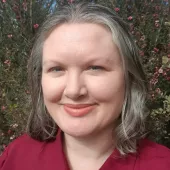Video: 10 Minute IT Jams — A chat with Gary Gruver
Gary Gruver wants to tackle the toughest obstacle in technology - getting people to work better, faster and with less waste.
A seasoned executive, author, and keynote speaker, Gruver's journey through the world of agile and DevOps has seen him help some of the world's largest organisations overhaul their software development processes. He spent the first 18 years of his career at Hewlett Packard Enterprise in a wide range of roles, from manufacturing engineer to supply chain manager and ultimately as the leader of a team developing embedded firmware.
"When I took over leading this team, it had been the bottleneck for the business for over two decades," Gruver said. "By focusing on continually improving how we developed and delivered firmware, we were able to improve productivity by two to three times, which removed the bottleneck for the business, reduced costs and freed up capacity for innovation."
Gruver's next step took him to Macy's, where he helped lead the retailer's journey toward continuous delivery. "For the last eight years, I've been trying to help as many people as possible on their continuous improvement journeys through consulting, writing, presentations and workshops," he said.
Now, Gruver has launched a new training and certification programme, Engineering the Digital Transformation. Rather than focusing on hands-on consulting, Gruver's latest venture seeks to codify his experience and lessons in a scalable, accessible digital format. "The goal of Engineering the Digital Transformation is doing everything I can to teach people how to run their own transformations," he said.
This switch to digital learning, he explained, has key advantages. "First, I could scale to help a lot more organisations. Second, it was much more affordable for my clients."
Gruver also recently partnered with David Farley, a well-known technologist and author in the DevOps domain. The collaboration, Gruver says, is about combining different strengths for a common goal.
"David and I have both been working in this space for a long time helping a lot of different companies. We're both at a point in our careers where we're trying to help as many people as possible," he explained. "My background is as a leader and David's is from a developer. Over time, I've gotten closer to the technical challenges of the implementations and David has spent more time working with leaders. Our background gives us different strengths - I'm good at helping people understand what needs to be fixed and gaining alignment across the organisation, but I'm not very good at helping with the technical implementations. That's where David is really strong and why I seek him out for partnership."
The collective aim is clear: to help organisations transform their software development and delivery processes. "Together we're trying to do everything we possibly can to help people be successful transforming their software development delivery processes because of what an impact we've seen it have on ourselves, the people we've worked with and the businesses they're part of," Gruver added.
A key difference in Gruver's philosophy is his approach to continuous improvement, which favours practicality over rigid frameworks. "Most approaches create complex frameworks that were designed to solve someone else's problems. They focus on if you just implement these rituals, you will also be successful," he said. In contrast, the Engineering the Digital Transformation White Belt training and certification "focuses on teaching people how to analyse their unique challenges and make them visible in order to gain alignment across the organisation on an improvement journey."
The more advanced Green Belt certification encourages participants to apply those principles in their own organisations, leading an improvement project that typically lasts four to six months. "These improvement projects require demonstrating with metrics that you've removed waste and inefficiencies in your organisation," Gruver explained. "I like this part the best because I think this is where the true learning occurs - when you really start applying the principles, and this is where the business value is delivered."
The partnership with David Farley builds on this foundation. Once companies are motivated to implement change, Farley can step in to provide the technical depth needed to succeed. "David's been working in space for a long time so he has a good feel for what works and what doesn't," Gruver said.
Farley's training is designed to "help people understand good design patterns and avoid common mistakes," Gruver continued. "He can't cover every technology and every approach out there, but in a principle-based manner he tries to teach good design patterns and show the pains associated with maintaining and supporting bad design patterns."
To aid learning, Farley provides a variety of resources, "videos, definitions, tutorials and actual samples of working code that people can look at, evaluate and see how it works so that they can go in and apply these principles in their own organisation and their own technologies."
Gruver is also excited about a new prototype programme he is offering, designed to address the biggest challenge in digital transformation: getting leadership teams aligned. "The biggest challenge with most transformations is getting alignment across the leadership team. This requires them to take time to understand their unique issues and make them visible so they can agree on the improvements that will add the most value."
He believes this step is so crucial that he is "offering free prototypes of the training to any company that can get a group of leaders to commit to taking it."
For Gruver, the mission goes beyond professional satisfaction, striking at the heart of what makes organisations thrive in the digital age. "Organisations that do this tend to do a better job of sustaining their investments and improvements and embracing new ways of working," he said.
Asked about his passion for helping others succeed through these challenging journeys, Gruver concluded with characteristic enthusiasm: "Thanks for having me - it's been great to be here."


